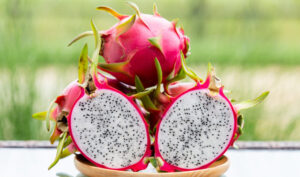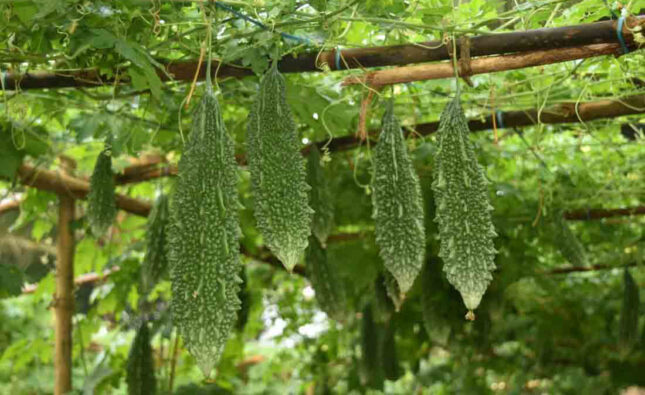What is the dragon Fruit and its Origin
Dragon fruit, also known as pitaya, is a tropical fruit that is native to Central America but is now cultivated in various parts of the world, including Southeast Asia, the United States, and Australia. It is known for its distinctive appearance and vibrant colors. The origin of dragon fruit, scientifically known as Hylocereus and Selenicereus, can be traced back to Central America, particularly the tropical and subtropical regions of Mexico and Central America. The fruit is believed to have originated in the area encompassing southern Mexico, Guatemala, and Costa Rica. From its native region, dragon fruit cultivation spread to other parts of the world over the centuries. It was introduced to other countries through trade and exploration routes. Today, dragon fruit is cultivated in various regions globally, including Southeast Asia, Australia, the United States (particularly Florida, California, and Hawaii), and parts of Africa. Dragon fruit’s popularity and commercial cultivation have expanded over time due to its unique appearance, nutritional value, and adaptability to different climates. The fruit’s ability to grow in a variety of regions has contributed to its global availability and consumption.
In the tropical parts of India, the cultivation of dragon fruit is fast picking up and farmers of Karnataka, Kerala, Tamil Nadu, Maharashtra, Gujarat, Chhattisgarh, Odisha, West Bengal, Andhra Pradesh, Andaman & Nicobar Islands, Mizoram and Nagaland have taken up its cultivation. In 2020, the total area under cultivation of Dragon Fruit in India is more than 3,000 ha. which is not able to meet the domestic demand, hence majority of the dragon fruits available in Indian market is imported from Thailand, Malaysia, Vietnam and Sri Lanka.
Cultivation of Dragon Fruits:
Dragon fruit cultivation, also known as pitaya farming, can be a rewarding endeavor. Here are some key considerations and steps involved in dragon fruit cultivation:
- Climate and Soil Requirements:
- Dragon fruit thrives in tropical and subtropical climates with temperatures ranging between 65°F to 95°F (18°C to 35°C).
- Choose a location with full sun exposure and protection from strong winds.
- Well-drained soil is essential for dragon fruit cultivation. Sandy or loamy soil with a pH level between 6 and 7.5 is ideal.
- Planting:
- Obtain healthy dragon fruit cuttings or seedlings from a reputable source.
- Dig a hole or trench deep enough to accommodate the root system of the plant.
- Place the cutting or seedling into the hole and backfill with soil, ensuring the plant is stable.
- Provide support for the young plant, such as a trellis or stakes, to help it grow upright.
- Irrigation:
- Dragon fruit plants require regular watering, especially during the initial growth stages.
- Irrigate the plants deeply and allow the soil to dry out slightly between waterings.
- Adjust the irrigation schedule based on the climate and rainfall patterns in your area.
- Fertilization:
- Use a balanced fertilizer specifically formulated for cacti and succulents.
- Apply fertilizers during the growing season, following the recommended dosage and frequency.
- Avoid excessive nitrogen, as it can promote vegetative growth at the expense of fruit production.
- Pruning and Training:
- Prune dragon fruit plants to remove any damaged or diseased parts and promote a well-shaped canopy.
- Train the plants to climb the trellis or support structure by tying the branches as they grow.
- Pest and Disease Management:
- Monitor the plants regularly for pests like aphids, mealybugs, and scale insects. Use organic or chemical insecticides as necessary.
- Preventive measures such as maintaining proper sanitation, removing weeds, and providing good air circulation can help minimize disease risks.
- Harvesting:
- Dragon fruits typically mature within 30 to 50 days after flowering.
- Harvest the fruits when the skin color changes from green to pink or red, depending on the variety.
- Handle the fruits carefully to avoid damage.
Varieties of Dragon Fruit?
There are three common varieties of dragon fruit:
- Hylocereus undatus(pitaya blanca) has pink/red skin, white flesh, and black seeds.
- Hylocereus polyrhizus (pitaya roja) has pink/red skin, red flesh, and black seeds.
- Hylocereus guatemalensis(pitaya amarilla) has yellow skin, white flesh, and black seeds.
Nutrition Value of Dragon Fruit:
Here is a breakdown of the nutrition value typically found in dragon fruit:
- Macronutrients:
- Calories: Dragon fruit is relatively low in calories. A serving of 100 grams contains approximately 60-70 calories.
- Carbohydrates: It is a good source of carbohydrates, providing around 9-14 grams per 100 grams of fruit.
- Fiber: Dragon fruit is rich in dietary fiber, with approximately 1-2 grams per 100 grams. Fiber promotes healthy digestion and can help regulate blood sugar levels.
- Vitamins:
- Vitamin C: Dragon fruit is a great source of vitamin C, providing about 20-30% of the recommended daily intake per 100 grams. Vitamin C is an antioxidant that supports immune function and collagen synthesis.
- Vitamin B6: It contains a moderate amount of vitamin B6, which is involved in various metabolic processes, including energy production and brain function.
- Minerals:
- Iron: Dragon fruit contains iron, a mineral necessary for oxygen transport and the formation of red blood cells.
- Calcium: It provides a small amount of calcium, which is important for maintaining healthy bones and teeth.
- Magnesium: Dragon fruit contains magnesium, a mineral involved in numerous enzymatic reactions and essential for muscle and nerve function.
- Antioxidants:
- Dragon fruit is rich in antioxidants, such as flavonoids and betacyanins, which help protect against oxidative stress and cellular damage caused by free radicals.
- Hydration:
- Dragon fruit has a high water content, contributing to its hydrating properties and aiding in maintaining proper hydration levels.
According to the guidelines of the United States Department of Agriculture (USDA), one cup of dragon fruit having the following nutrition value:
- 103 calories.
- 0 grams of fat.
- 6 grams of fibre.
- 4 grams of carbohydrates.

Health Benefits of Dragon Fruits
Although there are many benefits of dragon fruits but some of are as follows:
Good source of fibre
Dragon fruit is an excellent source of fibre, Prescott says. The daily recommendation for fiber in adults is at least 25 grams — and dragon fruit packs 5.6 grams in a single 1-cup serving.
“Fiber may benefit gastrointestinal and cardiovascular health,” she adds. “Fiber is also filling, which is helpful if you’re trying to lose weight. People who eat whole, fiber-rich foods are more likely to maintain a healthy weight.”
Improve the gut health
Healthy bacteria in your gut may help digestion and even reduce colon cancer risk. Dragon fruit is a prebiotic that boosts the growth of probiotics lactobacilli and bifidobacteria. “Some studies appear to show that dragon fruit promoted the growth of healthy gut bacteria,” says Prescott. “It may have a positive effect on the gut microbiome, the good bacteria in our intestines.”
Rich in antioxidants
Dragon fruit contains a few different kinds of antioxidants, which work to neutralize free radicals. Those free radicals can damage cells and cause inflammation, which can lead to chronic diseases like cardiovascular disease, diabetes and even cancer. Vitamin C, an antioxidant, helps your body absorb iron and boosts immune system health. Carotenoids may reduce cancer risk. And lycopene, a type of carotenoid, may improve heart health and reduce cancer risk.
- Sales Strategies:
- Identify Target Market: Determine your target audience, whether it’s local consumers, restaurants, grocery stores, or wholesalers. Understand their preferences, buying habits, and demand for dragon fruit.
- Product Differentiation: Highlight the unique qualities and health benefits of dragon fruit. Emphasize its vibrant colors, exotic appearance, and nutritional value to stand out from competitors.
- Packaging and Presentation: Use attractive and eco-friendly packaging that preserves the freshness and quality of dragon fruits. Consider packaging options like clamshells or customized boxes with branding.
- Pricing: Set competitive prices based on market research, production costs, and quality. Consider offering discounts or promotions to encourage sales, especially during peak seasons.
- Distribution Channels: Establish effective distribution channels to reach your target market. This may involve direct sales at farmers’ markets, establishing partnerships with local stores or restaurants, or utilizing online platforms for wider reach.
- Marketing and Promotion: Utilize various marketing strategies to create awareness and generate demand. This can include social media campaigns, website development, participation in local events or festivals, and collaborations with influencers or food bloggers.
- Quality Control and Customer Service: Ensure consistent quality by implementing quality control measures throughout the production and distribution processes. Provide excellent customer service, address inquiries promptly, and consider customer feedback for continuous improvement. Remember, the success of your dragon fruit farming and sales strategies will also depend on factors like local market conditions, competition, and adaptability to changing consumer preferences. Regularly assess and adjust your strategies accordingly to maximize profitability and customer satisfaction.






